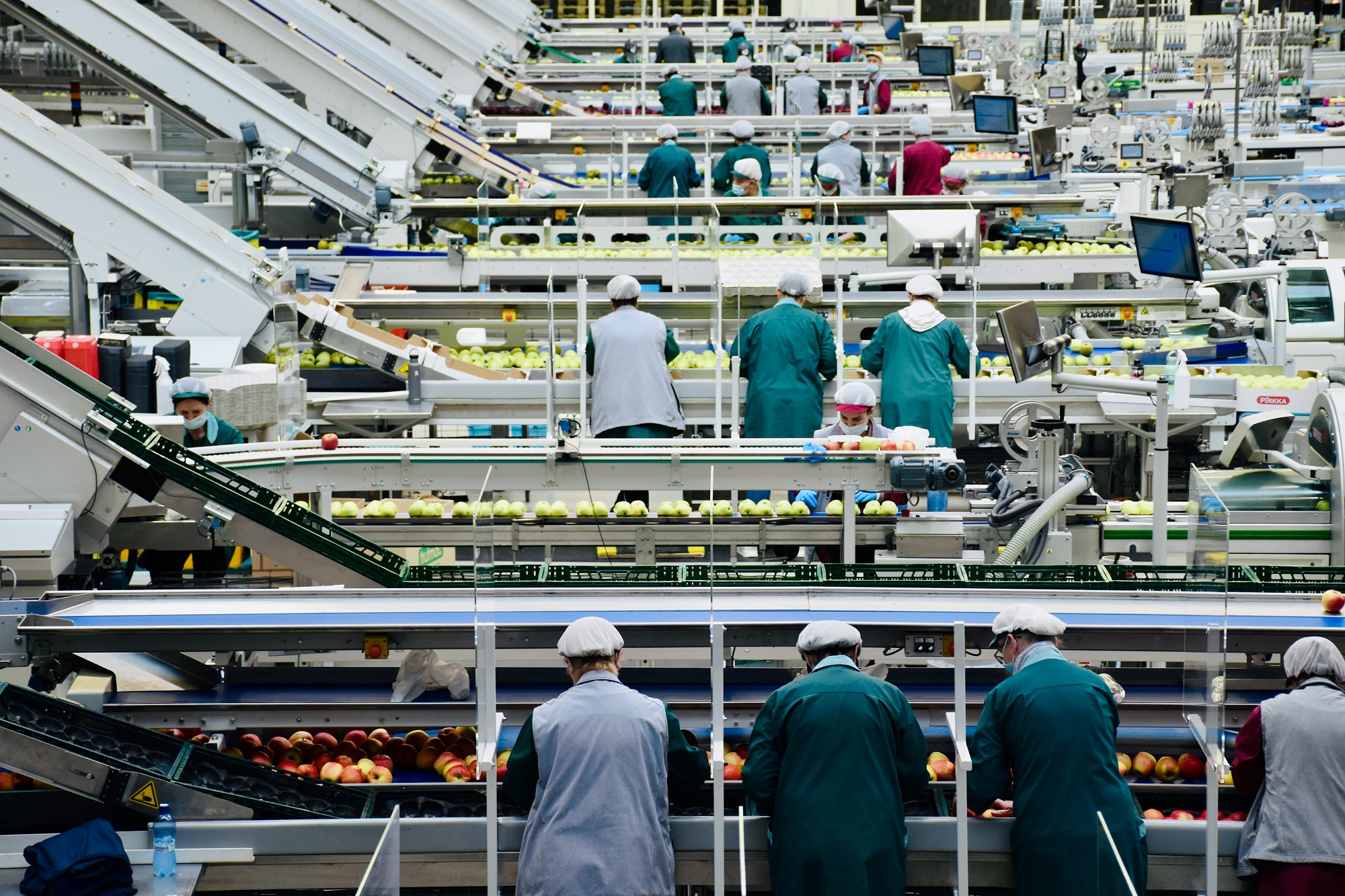Headline Stats That Demand Attention
The UK food and beverage (F&B) sector remains the backbone of national manufacturing. Over the past decade, the industry has expanded by almost 18%, and today it represents close to a quarter of all UK manufacturing turnover. Contributing more than £37 billion in Gross Value Added (GVA), it is one of the country’s most vital economic engines.
The scale of the sector is striking: more than 20,000 food and drink manufacturers operate nationwide, with approximately 285 large enterprises employing over 250 people each. Collectively, the industry generates £148 billion in annual output.
Investment momentum is strong. In 2024, the sector attracted £5.8 billion of capital investment, and historically every £1 invested has delivered up to £9 in value. Forward-looking business leaders recognise the opportunity: nearly three-quarters identify AI, robotics, digitalisation and data analytics as growth drivers, while over half (54%) rank automation and digital transformation as their top investment priority. A further third of companies (32%) see sustained growth coming directly from capital expenditure.
The Challenges Facing UK F&B Manufacturing
While the food and beverage sector is a powerhouse of UK industry, it continues to operate under immense pressure. Margins remain historically low, meaning profitability is often driven by sheer scale of production. This dynamic has fuelled a series of high-profile consolidations across the market, think Kellanova with Mars, or Bakkavor with Greencore.
But consolidation is only one symptom. The sector faces a persistent set of structural challenges that show no sign of easing:
- Sustainability and Net Zero commitments – achieving 2030 and 2050 goals requires major investment in greener processes and technologies.
- Operational costs and margin pressure – rising energy costs and volatile input pricing continue to erode bottom lines.
- Increasing regulatory compliance – with evolving standards across food safety, packaging & labelling and traceability.
- Labour shortages and skills constraints – a long-standing issue compounded by demographic change and competition for skilled engineers.
- Digital transformation and automation adoption – while recognised as essential, investment often lags due to competing capital demands.
On top of these, shifting consumer demand and ongoing supply chain disruption only add to the complexity. Yet these can be mitigated. Digital transformation enables agility, allowing manufacturers to reconfigure processes, harness real-time data and respond faster to change.
The Hidden Threat: Obsolete Automation Systems
Beneath the sector’s better-known challenges lies a critical vulnerability that is too often overlooked – obsolete and legacy automation systems. Years of underinvestment in upgrades have left many UK food and beverage producers dependent on equipment dating back to the 1990s or earlier. These systems are not only unreliable, but they also create significant barriers to the very digital transformation the industry is striving to achieve.
Automation product lifecycles follow predictable patterns across all vendors.
Obsolescence itself emerges in defined stages, giving users plenty of warning and time to plan for upgrades and migrations.Yet, even with years of warning, companies still expose themselves to major risks, not just in terms of production throughput but also safety. Back in the early 2010s, I remember one chemical process plant was running on a discontinued DCS; the cost of support alone ran into the millions. More recently, manufacturers have been forced to beg, borrow and even scour eBay to source discontinued parts.
The consequences are tangible. Legacy equipment is more prone to breakdowns, spares are harder to source, and specialist expertise is disappearing from the market. In the UK the average age of an engineer is around 55 years old, that’s 10 years until retirement and at best 10 years of engineers with firsthand experience with your control system.
Then there is cyber security. Outdated firmware, missing security patches and poor network segregation mean many legacy assets remain exposed to cyber threats. In some cases, shopfloor systems are still directly connected to corporate networks, creating 100s or 1000s of potential vulnerabilities for malicious attacks.
While there are workarounds – such as IoT devices to extract data from legacy systems, these are only temporary fixes. True digital readiness requires modern operational technology, designed for connectivity, security and data-driven performance.
Taking Control: How to Tackle Obsolescence
The scale of the challenge can feel daunting, particularly for manufacturers where systems have been left untouched for decades. In these cases, upgrade costs can escalate quickly, and resource constraints often mean that day-to-day operations take priority over long-term investment projects.
Add to this the complexity of managing equipment from multiple vendors; each with its own upgrade tools, standards and lifecycle paths. You can soon see why companies are dodging the subject.
But doing nothing is not a strategy. The first step towards regaining control is to understand the real level of risk within your operations. A structured site assessment provides the foundation. While its core focus is on identifying and prioritising obsolescence risks, it also delivers broader operational insights that are critical to long-term resilience:
- Create a complete asset register – document every automation component, from controllers and drives to networks and field devices.
- Identify lifecycle stage – determine which components are approaching, or already beyond, manufacturer end-of-support.
- Map criticality – assess how vital each asset is to production, safety and compliance.
- Assess staff capability – highlight skills gaps and training needs to ensure your workforce can operate, maintain and transition to modern systems effectively.
- Evaluate OT cyber risk – provide a high-level view of vulnerabilities across your operational technology estate, from outdated firmware to network exposure.
- Prioritise upgrades – combine obsolescence risk with operational and security impact to build a clear, defensible roadmap.
This process turns a seemingly insurmountable challenge into a manageable programme of action, giving decision-makers the clarity they need to plan investment and justify ROI.
For many manufacturers, the next step is to phase upgrades, build an upgrade roadmap. Target the highest-risk areas first while spreading cost and resource requirements over time, potentially multiple years. With the right strategy, it is possible to modernise without bringing production to a halt and manage the investment required.
Building the Foundation for the Future
UK food and beverage manufacturing has always been defined by its resilience and ingenuity. But the reality is that the sector cannot afford to carry the hidden burden of obsolete systems any longer. Digital transformation, automation and data-driven operations are no longer optional, they are the preconditions for competitiveness in a volatile global market.
The first step is not a leap into the unknown. It is the disciplined groundwork of understanding your installed base, confronting obsolescence head-on, and building a roadmap that balances today’s risks with tomorrow’s opportunities. Those who act early will not only reduce downtime and enhance safety, but also unlock capacity, control costs and position themselves to lead in an increasingly digital economy.






